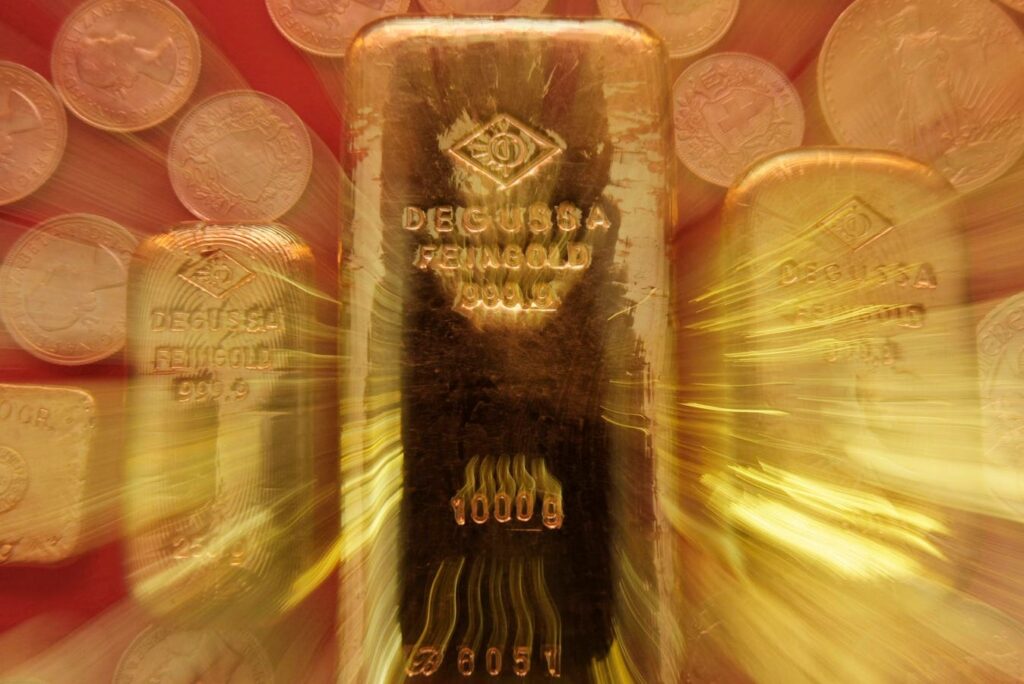About 14 months ago, I wrote a column about gold. “I don’t think gold is an investment for all seasons,” I wrote, “but right now, I think it’s sensible to hold some.”
That turned out to be right. Gold is up about 51% since I made that recommendation, including a 25% gain this year through May 30.
So, what now? Take your golden profits and run? I don’t think so. Most of my clients have about 6% of their portfolio assets in gold, and I’m considering increasing that.
Gold doesn’t have profits or pay dividends, so evaluating it is harder than evaluating a stock. However, I think there are four major factors that move the price of gold: inflation, real interest rates, the dollar and geopolitics.
Inflation
Gold is traditionally considered a hedge against inflation, because it tends to hold its purchasing power. Today a Big Mac sandwich costs about $6 and an ounce of gold sells for about $3,300. So, one ounce of gold could buy 555 Big Macs.
If inflation worsens and a Big Mac three years from now costs $8, it would not be surprising for gold to command a price of $4,400. Then an ounce of the previous metal would still pay for 555 Big Macs.
Will inflation worsen? After all, a few days ago President Trump said that he had “solved inflation.” In support of that assertion, he has said repeatedly that the price of gasoline is under $2 a gallon.
I hate to break it to the President, but when I bought gas last week it cost $2.99 a gallon. Meanwhile, Congress appears likely to pass a budget that features a gigantic budget deficit. To finance deficits, the U.S. Treasury may be forced to issue more bonds. Many economists view that as inflationary.
In addition, the tariffs that President Trump has proposed would add to inflation, in my view, by making a variety of goods more expensive.
Real Rates
For gold, low real interest rates are good and high real interest rates are bad. The “real” interest rate is the rate paid on fixed-income instruments like bonds, minus the inflation rate.
An old rule of thumb was that bond investors want to earn three percentage points more than inflation – for example, a 6% interest rate if inflation is running 3%. That rule turned out to be too simplistic, but the general point behind it is valid.
Gold and bonds are competitors: They compete for the dollars of risk-averse investors. If bonds are more attractive, gold is less so.
Ten-year Treasury bonds currently pay about 4.4% interest. Inflation for the year through April was about 2.3%. So, the real interest rate is somewhere in the neighborhood of 2.1%. That’s not terrible but it’s below the historical average.
The Dollar
The strength of the dollar is partly a gauge of how much faith people in other countries have in the United States. Less faith equals more jitters. More jitters may inspire a flight to gold.
One thing people need dollars for is to buy U.S. goods and services. If trade barriers are erected, people and businesses in other countries have less need for dollars, so the dollar might decline in price relative to the Euro, the yen and other currencies.
What would a weak dollar mean for gold? Historically, gold has generally done well when the dollar was weak, and poorly when the dollar is strong. There are exceptions, notably 2023-2024, when the dollar was strong and gold rose nevertheless.
Ned David Research, an outfit for which I have considerable respect, is predicting a weak dollar and strength in gold for 2025.
Geopolitics
The more stress there is in the world, the better for gold. In the U.S., people worried about geopolitical tensions may buy gold as a defensive holding. That’s even more true in China, India and Europe.
Despite sporadic efforts at peace talks, there are two hot wars in progress – between Russia and Ukraine, and between Israel and Gaza. In addition, there are at least two notable cold wars, between the U.S. and China, and between the U.S. and Iran.
To me, that geopolitical backdrop most likely signals continued strength in gold.
Bear in mind that most performance information in my column is hypothetical and shouldn’t be confused with results I obtain for clients. Also, past performance doesn’t predict the future.
Disclosure: Personally, and for most of my clients, I own shares in SPDR Gold Shares (GLD), an exchange traded fund that represents ownership of a fraction of a large store of physical gold.
Read the full article here


